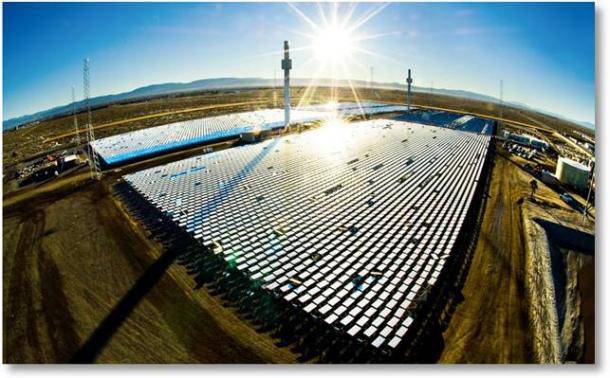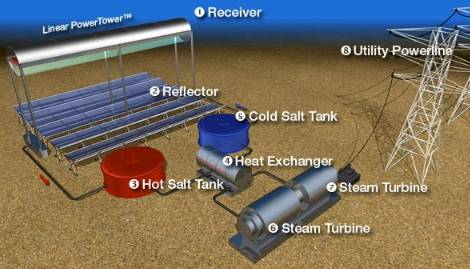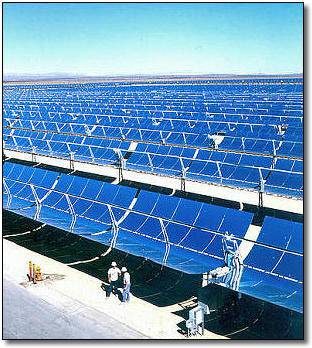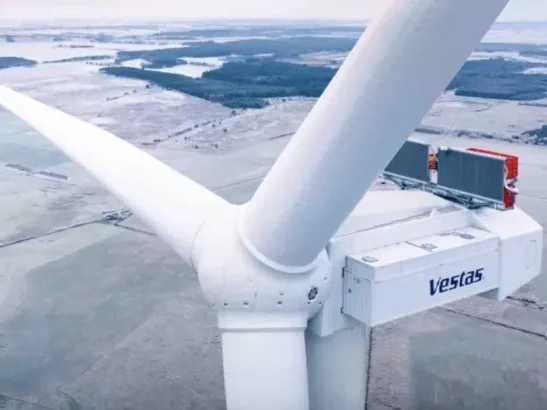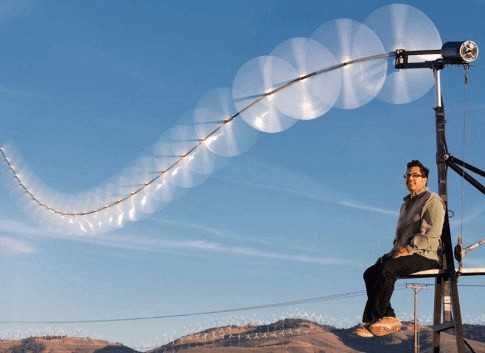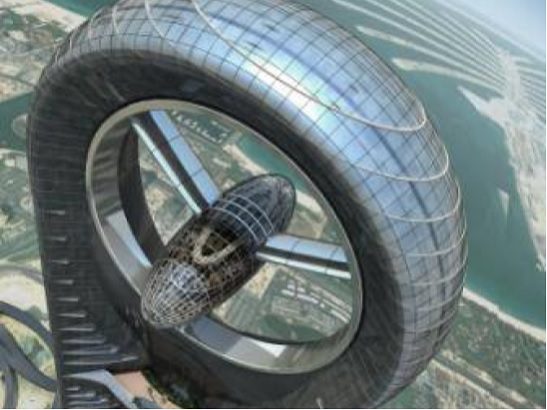Concentrated Solar Power Systems use concentrated solar radiation as a high temperature energy source to produce electrical power and drive chemical reactions. Concentrating solar power (CSP) systems use lenses or mirrors and tracking systems to focus a large area of sunlight into a small beam.
The concentrated light is then used as a heat source for a conventional power plant or is concentrated onto photovoltaic surfaces. The first recorded use of such a technique was in 212 BC when Archimedes is said to have used mirrors to burn Roman ships attacking Syracuse. Nowadays the only applications are peaceful and they provide either heat or electricity. The first commercial plants have been in operation in California since the mid-1980s, providing the 354 megawatts of the world’s lowest-cost solar power.
Advantages
• Clean, non-polluting
• Renewable, endless supply that belongs to no one.
• Works best in the sunniest, often the poorest, parts of the world.
• Dovetails with other clean systems.
• Flexible and modular – systems can be resized.
• CSP systems are modular
• Adapt well to decentralised generation systems.
• Can be installed in hybrid applications to allow for 24-hour operation.
• Can be exported to the developing world.
• Produce both heat and electricity
• Can replace all or part of the energy requirements in some industrial applications.
• Durability and low operating costs
Disadvantages
• Relatively high construction costs
• To recover these costs, plant operators need to be able to sign long-term power purchase agreements.
• High maintenance requirements due to the ‘Heat to electricity conversion’ requires moving parts
Main components of a CSP System
• The solar field – This is the reflective area and is quoted in square metres. It is used to collect solar radiation. The surface area quoted is not the land use area.
• The solar collector element – This is the largest of the solar collecting components. It may consist either of a single item or an assembly of elements.
• The solar receiver – This is the component in which solar radiation is converted into heat.
• The balance of plant – This covers all the elements and installations necessary for a CSP system, but not those related to solar conversion.
Continued in Part 4 – Geothermal Energy

